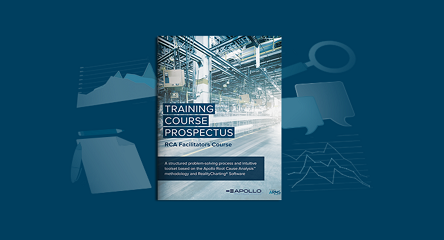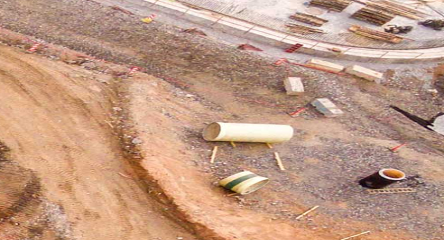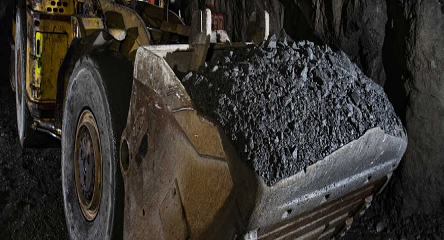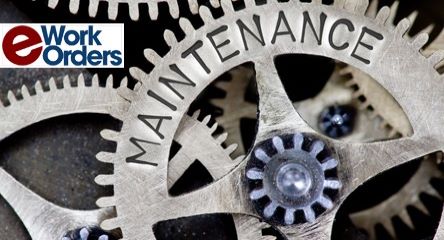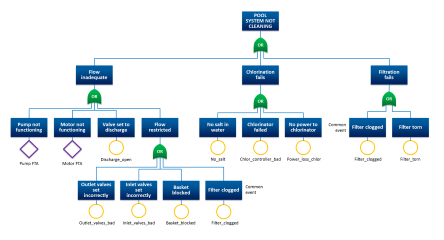For those willing to embrace change, the advent of Industry 4.0 has presented proven opportunities to optimise reliability and cost-efficiency, particularly for companies operating across multiple sites, where the benefits of a move towards greater connectivity and consolidated data are more tangible.
There are myriad reasons why some companies have been slow to digitalise their CBM programme – financial constraints and staffing concerns for certain, but also sometimes a mindset that says ‘wait for something to fail and then tackle the problem’.
However, consider what a genuinely proactive maintenance programme can achieve in terms of plant reliability, operational efficiency and cost-effectiveness – and the affordable digital options available to facilitate it – and it’s hard not to be persuaded of its value.
Vibration
In any harsh operating environment changes in the levels of vibration are an important indicator of a developing fault that, if left unchecked, is likely to lead to failure and unplanned downtime. Any number of issues can cause excessive vibration, so identifying its cause is crucial.
Bearing failure
Bearings are highly sensitive to external factors. Particle contamination is a particular threat when there are high concentrations of dust which put pressure changes on the impeller or shaft, misalignment or poor lubrication can also be the ‘butterfly’s wing’ which results in premature bearing failure and brings repeat stoppages to a plant. With bearing failure accounting for 40% of all rotating equipment failures[1], these really do represent a significant threat to overall reliability and should be a central focus of any CBM plan. Simple and cost-effective bearing protection can help limit this.
Lubrication
Big problems often arise from comparatively small issues, and lubrication is a classic case in point. Poor lubrication accounting for more than 10% of all bearing failures[2], so a well thought through lubrication programme can have a significant impact on an overall maintenance programme.
Technology for reliability
A vast number of industries have aging assets which are subject to frequent premature failure. For those with no effective CBM plan in place, their understanding of why will remain superficial. Additionally, because so much focus is placed on getting operations back up and running in the short term, some failures are considered ‘routine’ and the root cause is never properly investigated.
Identifying the root cause of those failures not only enables a more proactive, preventive approach to maintenance, it can also promote a seismic shift away from the perception of routine downtime as a ‘necessary evil’ which must simply be factored into operational procedures.
Connectivity is key
Connectivity is of particular value to multi-site operations.
The most advanced technology offers high-speed, online real-time management of safety and business critical assets. These systems can consolidate readings as diverse as vibration, temperature and oil analysis on one platform, which can be securely accessed from anywhere in the world via a standard web browser.
Inexpensive, wireless sensors make it both affordable and scalable. Multiple web connectivity options and access to diverse data in one place, on one screen, means that continuous monitoring, asset management, failure detection and troubleshooting can become one seamless operation. Real time insight into, and analysis of, the condition of business-critical assets facilitates intelligent decision-making, which invariably results in improved productivity and cost-efficiencies.
With cloud based technology there is no need for expensive hardware, making this an affordable and accessible option. A key feature of this technology is its ease of use – there is no need to employ highly skilled operatives.
Increased safety is another benefit. With wireless technology a maintenance engineer can collect data easily using a standard Android phone or tablet, even from large, infrequent running or hard-to-access assets, and from a safe distance of up to 50m.
Motion amplification
Motion amplification can help understand any complex vibration modes, identifying adverse differential movements and areas of inadequate stiffness.
With is an optical video based technique, every pixel in a digital video image effectively becomes a sensor. Following processing, the relative movement between all features on the video are amplified to exaggerate movements, providing a clear indication of any vibration issues.
Additionally, data from any point on the image can be extracted in the form of calibrated time series or frequency spectra, which can be used as part of a root cause analysis.
Digitalisation is doable
A key fact, often overlooked, is that technology has progressed significantly in recent years, while its cost has decreased in real terms. Investing in a combination of fixed and mobile sensors, and one tablet, costs just a few thousand pounds, along with an annual licence fee. The digital tool safely collects and stores a whole range of valuable data on one platform, which can be readily accessed to inform a maintenance plan from a position of in-depth knowledge. Informed decisions can be made about what action is needed to pre-emptively deal with issues which could otherwise lead to failures.
Of course, any data is only of value when it is analysed and used to inform a proactive CBM programme.
Where data analysis is judiciously carried out, the shift from reactive to proactive maintenance can be instant and the ‘Catch 22’ of never getting on top of problems because you’re too preoccupied tackling the consequences, can become a thing of the past.
The benefits of operator driven reliability include:
- Improved asset health and reduced maintenance cost
- Improved asset performance, availability and life
- Improved production efficiency and maintenance resource availability
- Cost-effective digital tools with controllable and manageable costs
- Scalable deployment for smaller operations and potential future expansion
- Expert support available at the click of a button
The more apparent these benefits are to maintenance personnel, the more it can create a virtuous circle where colleagues at every level are invested in the efficient management of assets, as well as having a clearer understanding of how proactive maintenance impacts positively on the plant as a whole.
With safer, more efficient and cost-effective digital options available, the time has never been better to swap a ‘wait till it fails’ approach for the long-term reliability offered by a proactive, operator driven CBM programme.
[1] Bloch, Heinz; “Pump Users Handbook: Life Extension” 2011
[2] Bloch, Heinz; “Pump Users Handbook: Life Extension” 2011
